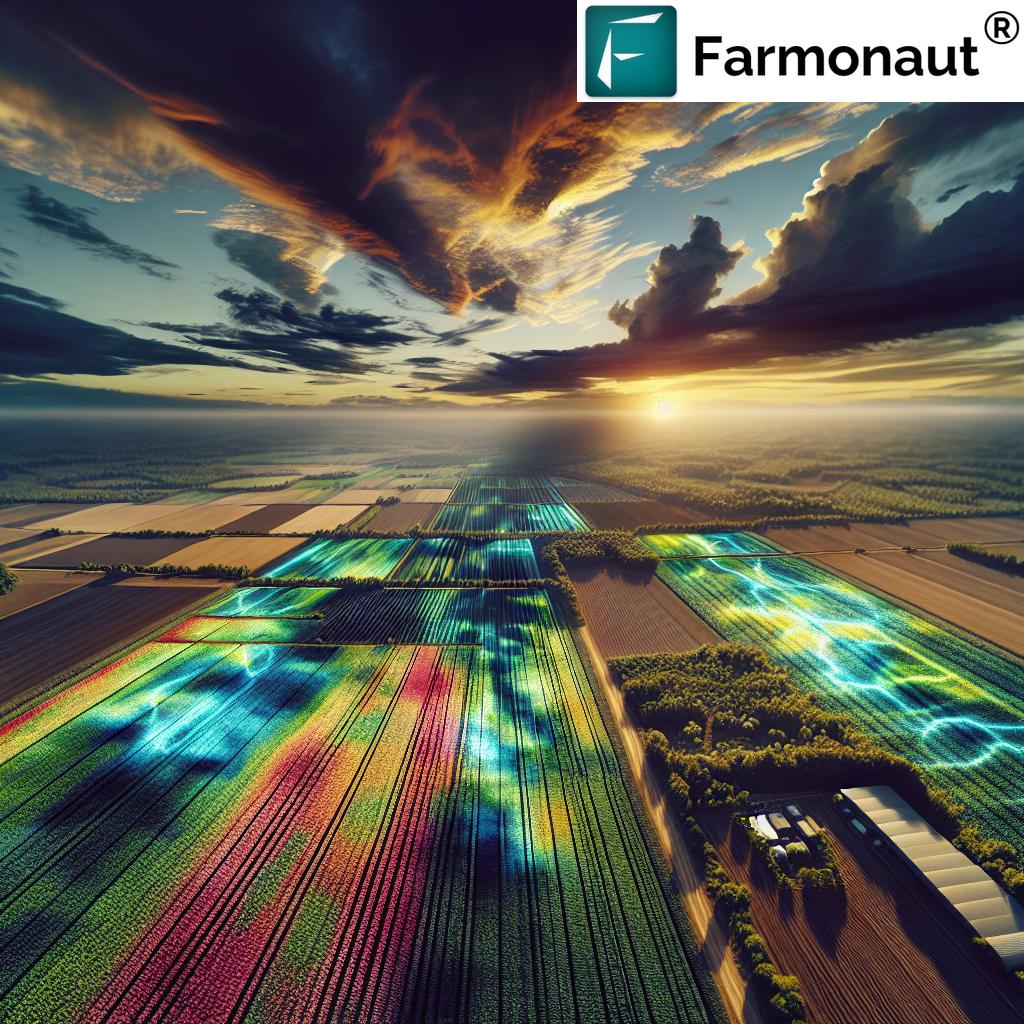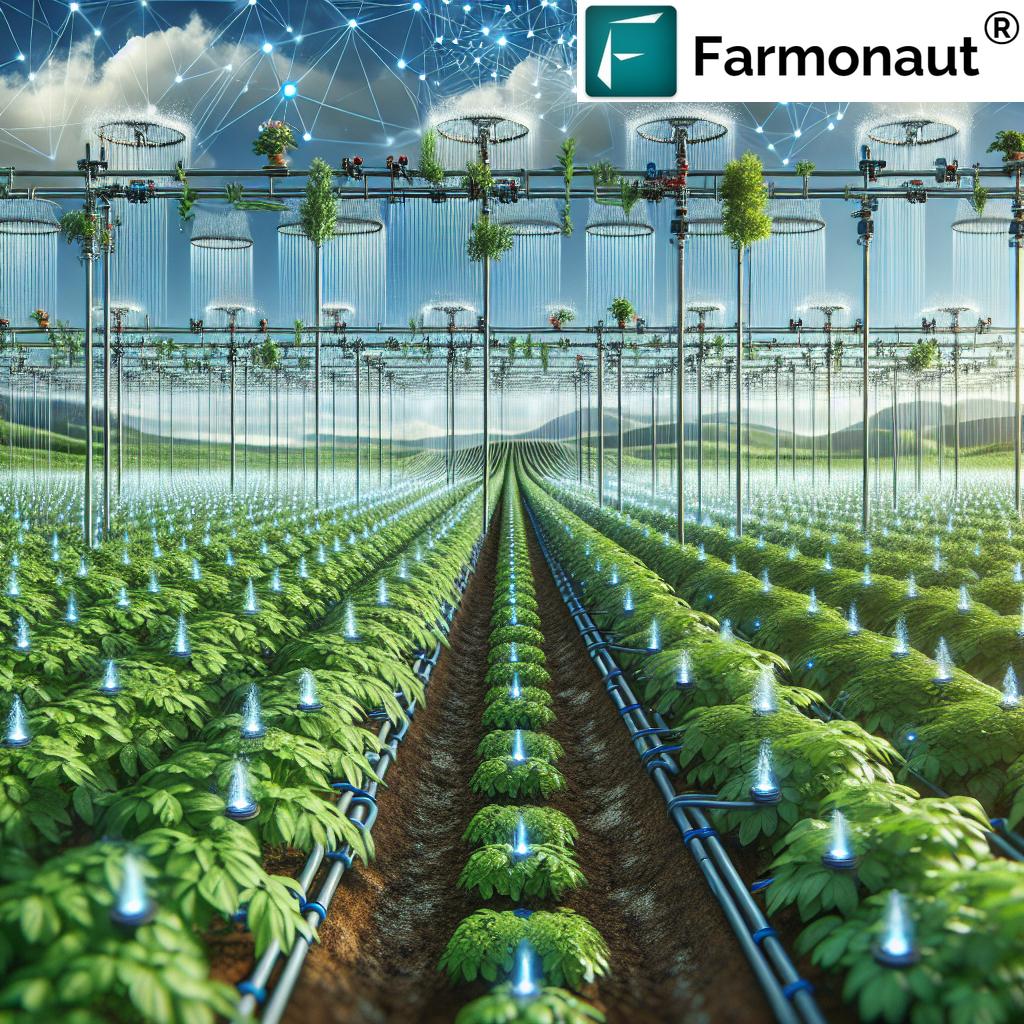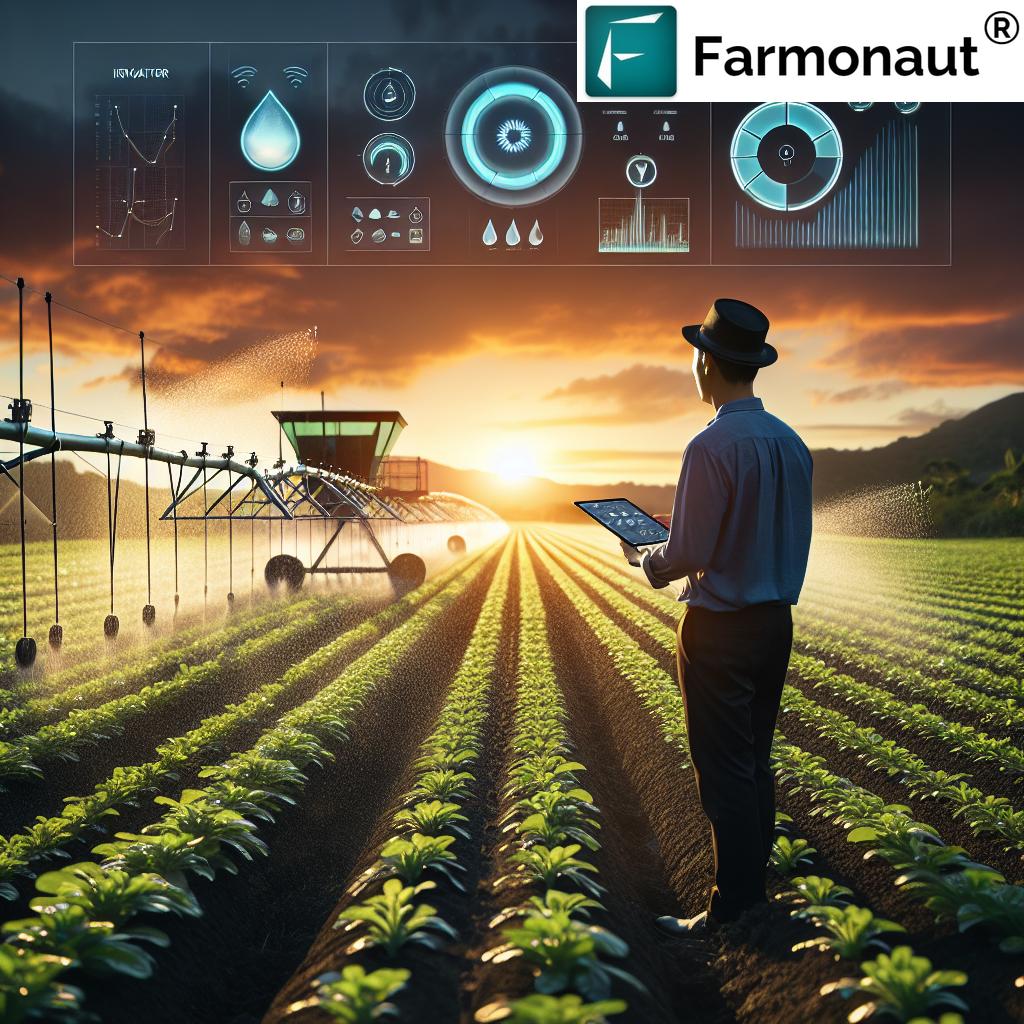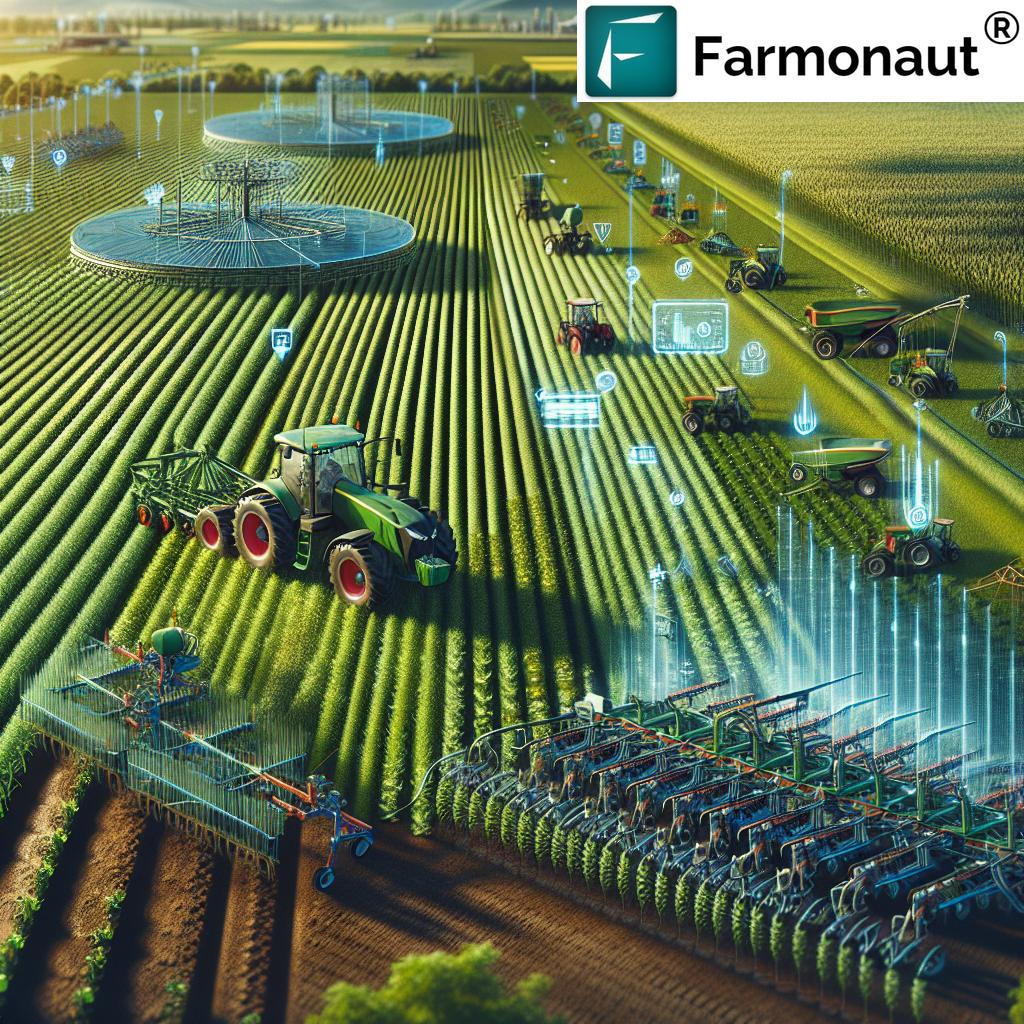Augmented Reality Agriculture: Automated Quality Control 2025
“By 2025, over 40% of large farms are expected to adopt augmented reality for automated crop quality control.”
Table of Contents
- Introduction: The Dawn of Augmented Reality Agriculture
- Why Augmented Reality Agriculture Matters in 2025
- Augmented Reality Technologies Revolutionizing Farming
- Automated Quality Control Agriculture: Ensuring Excellence
- The Synergy Between AR & Automated Quality Control
- Comparative Benefits Table: AR & Automated Quality Control vs Traditional Farming
- Environmental & Sustainability Impacts
- Adoption, Barriers & Opportunities for Global Farmers
- Farmonaut: Pioneering Advanced, Automated Insight for Farmers
- The Future Outlook: AR and Automation in 2025 and Beyond
- FAQ: Augmented Reality Agriculture & Automated Quality Control
- Conclusion: Transforming Agriculture for a Secure, Sustainable Tomorrow
Introduction: The Dawn of Augmented Reality Agriculture
“Automated quality control systems using AR can analyze up to 10,000 plants per hour for defects and growth rates.”
As we move forward into 2025, augmented reality agriculture and automated quality control agriculture are
revolutionizing the way farmers approach farming practices. The integration of advanced technologies is not only driving unprecedented efficiency and optimization of crop yields, but also helping to reduce waste, ensure higher standards of food quality, and address critical challenges such as global food security and environmental conservation.
In this comprehensive exploration, we’ll reveal:
- How AR enables real-time data visualization and immersive field management
- How automated quality control systems guarantee rigorous, consistent crop evaluation
- The synergistic impact of both technologies on sustainability, profitability, and food standards worldwide
- How Farmonaut‘s satellite technology & AI solutions equip modern agriculture
Let’s dive into how these powerful tools are reshaping the present and the future of agriculture.
Why Augmented Reality Agriculture Matters in 2025
The challenges facing agriculture in 2025 are immense: rising global food demands, unpredictable weather, frequent pest infestations, and strict sustainability standards. Traditional approaches—where whole fields are treated homogenously—often lead to overuse of water, fertilizers, and pesticides. This not only increases operational costs but also damages soil health and the wider environment.
Augmented reality agriculture is the powerful tool that enables farmers to leap beyond these constraints by offering:
- Critical information overlay—from soil metrics to live weather forecasts—directly onto their crops’ physical environment via headsets and mobile devices
- Fieldwide visualization for precise, tailored interventions—instead of blanket treatments
- Integration with drones, robotics, and AI-enabled inspection systems to reduce errors and labor
- Earlier detection and localized action for issues like nutrient deficiencies, soil moisture imbalances, or pest infestations
When augmented reality joins forces with automated quality control agriculture, the results are transformative — bringing higher food quality, more efficient harvests, and reduced environmental harm.
Augmented Reality Technologies Revolutionizing Farming
How AR Devices, Drones, and Visualization Empower Farmers in Their Fields
Augmented reality agriculture incorporates a variety of devices and software to empower farmers with immersive and valuable data visualization tools. Here’s how these technologies work together to modernize field management:
- AR Headsets and Glasses: Farmers don AR wearables to overlay real-time critical information (such as soil health, crop growth status, and pest alerts) directly onto their physical environment while walking their fields.
- Mobile AR Applications: Smartphones or tablets scan the environment, highlighting specific zones with nutrient deficiencies, moisture issues, and other metrics alongside interactive weather guidance.
- Integrated AR Drones: Drones equipped with advanced sensors, machine learning algorithms, and AR visualization scan vast acres, highlighting areas requiring attention, from diseased plants to localized irrigation needs.
- Satellite Data Integration: Platforms leverage satellite imagery to enhance AR overlays with macro-level insights (for instance, large-scale farm management), providing a unified view of the whole operation.
These innovations enable farmers to:
- Precisely apply interventions where they are truly needed, reducing overuse of fertilizers, pesticides and water
- Minimize environmental impact and lower input cost
- Respond swiftly to emerging field issues
Automated Quality Control Agriculture: Ensuring Excellence at Every Stage
What Is Automated Quality Control in Agriculture?
Automated quality control agriculture leverages robotics, sensors, machine learning, and computer vision to assess and grade crops from the field to the packing house. The goal: to ensure only the highest standards of produce reach consumers, while reducing operational costs and human error.
- Computer Vision: Automated cameras scan fruits, vegetables, leaves, and grains for parameters such as size, color, texture, ripeness, and signs of diseases or contaminants, achieving unparalleled accuracy.
- Robotic Arms and Automated Sorters: In packing facilities and greenhouse environments, robotics sort and pack produce at high speeds, consistently applying the same quality control standards.
- Machine Learning & Sensors: As data accumulates (fruit size, defect detection, growth rates), AI algorithms learn to predict quality issues before they escalate—supporting sustainable, lower-waste farming.
- Integrated Traceability: Blockchain-based systems track each batch of produce, ensuring origin, transit, and storage history are visible to all stakeholders.
How does this help farmers, food processors, and consumers? It enables:
- Efficient and rapid inspection (up to 10,000 plants/hour with AR and automation)
- Automated removal of defective, unripe, or contaminated produce
- Consistent, higher grade produce for premium markets
- Data-based insights for adjusting cultivation practices season by season
- Transparency and traceability for compliance and brand trust
These systems can operate relentlessly throughout harvest and post-harvest stages, drastically reducing food waste and ensuring only top-quality products reach the global supply chain.
The Synergy Between AR & Automated Quality Control: Transforming Agriculture from Field to Market
On their own, both augmented reality agriculture and automated quality control agriculture offer remarkable value. Together, their integration is revolutionizing the agricultural landscape in 2025.
- Data-Driven Decision-Making: AR-generated visualizations synchronize with quality control insights, feeding into integrated farm management platforms. This enables predictive analytics — for instance, forecasting potential yield shortfalls or downgrades, so farmers can optimize interventions ahead of time.
- Streamlined Operations: Automated inspection processes, informed by AR insights, cut down on repetitive labor, minimize mistakes, and allow for more consistent food standards.
- Regulatory & Market Compliance: Synchronizing traceability, grading, and yield predictions allows farmers to meet the rising demands of quality-conscious markets and stricter government regulations.

Download Our Android App for Real-Time Satellite-Driven Crop Monitoring

Download Our iOS App for On-the-Go Field & Crop Insights
Comparative Benefits Table: AR & Automated Quality Control vs Traditional Farming
| Aspect | Traditional Farming (Estimated 2025 Values) |
AR & Automation Enhanced Farming (Estimated 2025 Values) |
|---|---|---|
| Yield Increase (%) | 0–5% | 10–25% |
| Labor Hours/ha | 150–220 | 70–100 |
| Quality Control Accuracy (%) | 75–85% | 95–99% |
| Resource Savings (%) | 5–10% | 20–40% |
| Reduced Crop Loss (%) | Up to 15% | 2–8% |
Data based on industry projections and comparative analyses for 2025 agricultural operations.
Environmental & Sustainability Impacts of AR and Automated Quality Control in Agriculture
A critical benefit of augmented reality agriculture combined with automated quality control agriculture is fostering environmental sustainability at scale. Here’s how these technologies deliver on that promise in 2025:
- Minimizing Chemical Usage: Precision application of fertilizers, pesticides, and herbicides drastically reduces environmental impact, preventing over-application and contamination of soil and water.
- Early Detection & Rapid Response: AR-based sensors highlight pest infestations and diseases the moment they emerge, allowing for targeted interventions and reducing overall crop losses.
- Resource Conservation: By overlaying soil moisture and nutrient metrics on the field, AR systems enable localized irrigation and tailored fertilization — maximizing yield while using less water and energy.
- Climate & Impact Tracking: Platforms like Farmonaut’s carbon footprint monitoring solution empower users to measure and control their climate impact.
All these factors help in preserving biodiversity, protecting soil health, and achieving global sustainability goals.
Adoption, Barriers & Opportunities for Global Farmers
Adoption of augmented reality agriculture and automated quality control agriculture is rapidly accelerating. However, certain barriers and untapped opportunities remain for reaching smallholder farmers and large agribusinesses alike in 2025.
Key Drivers of Adoption
- Accessibility of AR Devices: Cheaper, more durable headsets and mobile apps are emerging, making immersive data visualization affordable even for smaller operations.
- Simplified User Interfaces: Modern AR applications present complex agricultural information in easy-to-understand overlays — reducing training barriers for less tech-savvy operators.
- Cloud & API Integration: Platforms offering straightforward API access and data streams allow third-party developers and big farms to embed AR/automation into their existing systems.
- Standardization: Automated quality control systems replace subjective human grading, allowing more farms to sell into premium, quality-conscious global markets.
Typical Barriers and Solutions
- Upfront Costs: While initial investments in AR and automation can be high, subscription platforms and pay-per-use models are making access more practical (see our pricing below).
- Connectivity: In regions with limited internet, advances in offline AR functions and satellite connectivity are extending access to remote farmers.
- Technical Know-How: Ongoing training, intuitive interfaces, and multilingual support help integrate small-scale farmers.
As technology matures and cost barriers drop, expect uptake to surge, significantly impacting the efficiency, quality, security, and sustainability of global food systems.
Farmonaut: Pioneering Advanced, Automated Insight for Farmers
At Farmonaut, we are devoted to making advanced AR, quality control, and satellite technologies affordable and accessible across the globe. Our mission is to empower everyone — from individual farmers to governments — through real-time monitoring, AI-based advisory systems, and blockchain-based traceability.
- Satellite-Based Crop Monitoring: We provide deep insight into natural vegetation health (including NDVI), soil moisture, infestation risk, and structural integrity of fields.
- Jeevn AI Advisory: Our proprietary system delivers instant recommendations, weather forecasts, and personalized farming strategies by analyzing satellite and AR data feeds.
- Blockchain Traceability: For both small farmers and big agri-companies, our traceability tools build transparency and consumer trust in food supply chains.
- Fleet and Resource Management: Using satellite intelligence, we help reduce costs, ensure vehicle safety, and optimize resources for teams managing large operations.
- APIs for Developers and Businesses: Our open APIs (see documentation) enable seamless integration for agritech platforms and other data-driven products.
Farmonaut Subscriptions & Pricing
The Future Outlook: AR and Automation in 2025 and Beyond
The integration of augmented reality agriculture and automated quality control agriculture is accelerating, with both smallholder and large-scale farmers transitioning towards data-driven, sustainable agricultural systems. Future trends that will define the years ahead include:
- Full Stack Automation: Seamless links between field sensors, satellites, robotics, and decision support platforms for 24/7 intelligent monitoring.
- Artificial Intelligence breakthroughs: Enhanced predictive analytics for yield optimization, soil health restoration, and disease forecasting.
- Greater Transparency & Traceability: End-to-end supply chain transparency, ensuring food safety and regulatory compliance.
- Wider Access & Affordability: As technology costs drop, the reach of AR and automation will expand deeper into developing economies, empowering millions of new users.
- Ultra-precise Interventions: Management at the micro-plot or even per-plant level, reducing waste to an absolute minimum while maximizing quality and sustainability.
- Continuous Environmental Impact Measurement: Mandated carbon and water footprint reporting using real-time, automated systems.
FAQ: Augmented Reality Agriculture & Automated Quality Control
What is augmented reality agriculture?
Augmented reality agriculture refers to the use of AR technology—such as headsets and mobile visualization tools—to overlay critical data and insights directly onto the physical environment of a field. This helps farmers make precise, data-driven decisions in real-time.
How does automated quality control agriculture work?
Automated quality control agriculture employs sensors, computer vision, robotics, and AI to analyze, grade, and sort produce for size, ripeness, color, and the presence of disease or contaminants. This increases speed, accuracy, and consistency.
Are these technologies too expensive for smallholder farmers?
While initial costs may be higher, subscription services, affordable mobile apps, and economies of scale are bringing AR and automation within reach for small and mid-sized farms worldwide.
How does AR agriculture improve sustainability?
AR enables site-specific interventions, reducing unnecessary use of water, fertilizers, and pesticides, and minimizing environmental impact—thereby supporting sustainable agricultural practices.
What is the benefit of integrating AR with automated quality control in agriculture?
Integration creates a closed loop of real-time monitoring, immediate quality feedback, improved traceability, and proactive crop management—driving consistent productivity, higher standards, and reduced waste.
How does Farmonaut help with satellite-based AR and quality control?
We provide satellite-driven insights, AI advisory, and blockchain-based traceability via user-friendly web and mobile apps, APIs, and monitoring dashboards that help farmers optimize yields, sustainability, and operational costs.
Can these systems integrate with other farm management or supply chain tools?
Yes. Our APIs and data feeds are designed to integrate seamlessly with third-party platforms, making it easy to adopt AR and automated quality control agriculture alongside your existing tech stack.
Conclusion: Transforming Agriculture for a Secure, Sustainable Tomorrow
The shift to augmented reality agriculture and automated quality control agriculture is not just a technological upgrade—it’s a fundamental transformation in how farmers manage fields, secure yields, and meet ever-rising food quality standards for a growing world. Blending powerful AR data visualization, real-time crop inspection, and advanced analytics, agriculture in 2025 is becoming smarter, more sustainable, and more inclusive.
Farmonaut is proud to play a role in this transformation, making satellite-driven, AR and AI-powered agriculture accessible, affordable, and effective for all.
Explore the future of farming today—embrace AR, automation, and sustainable excellence for a better food system, a healthier environment, and a more secure tomorrow.
Start your journey with Farmonaut’s advanced, subscription-based satellite and AI solutions now.










